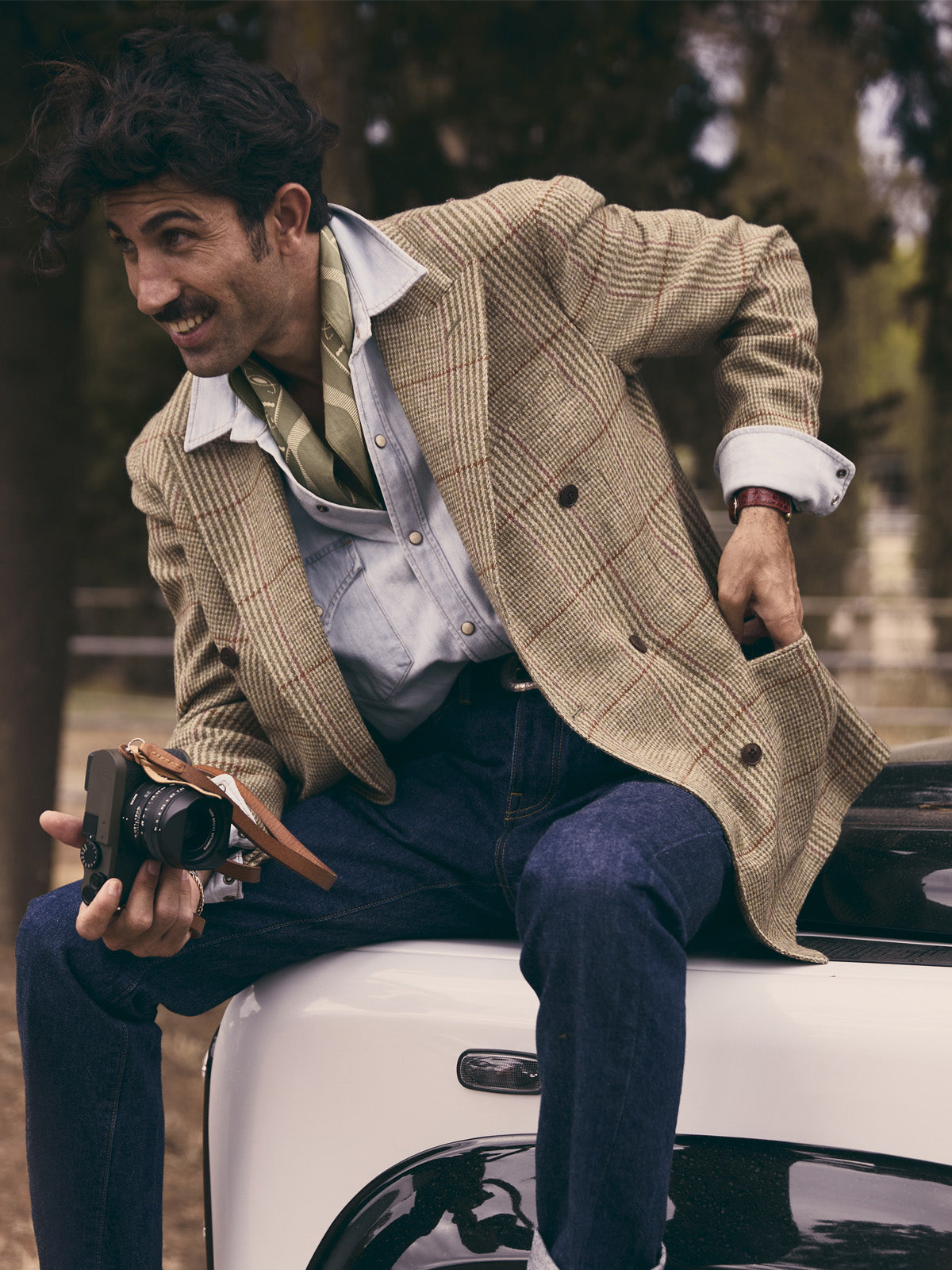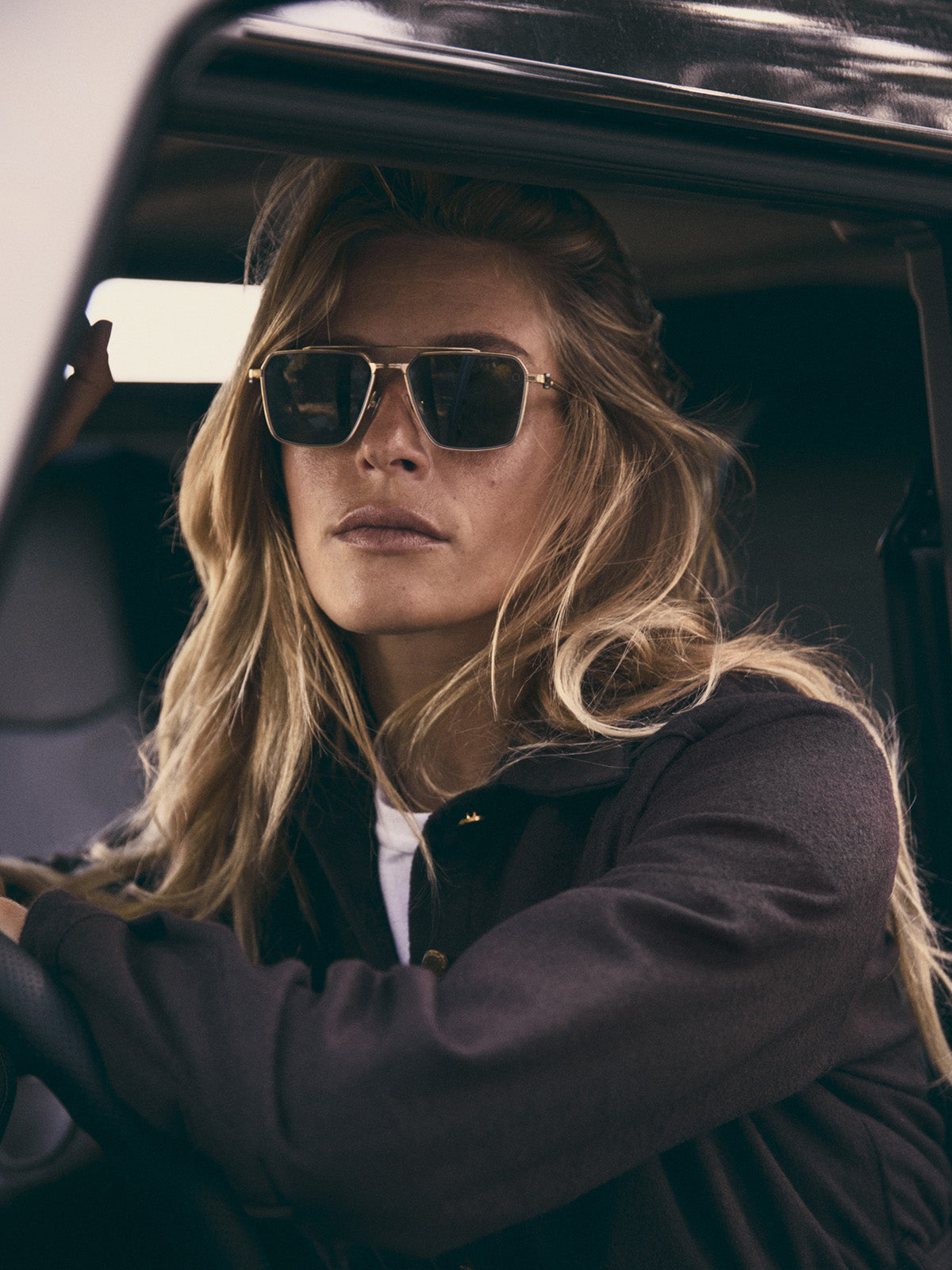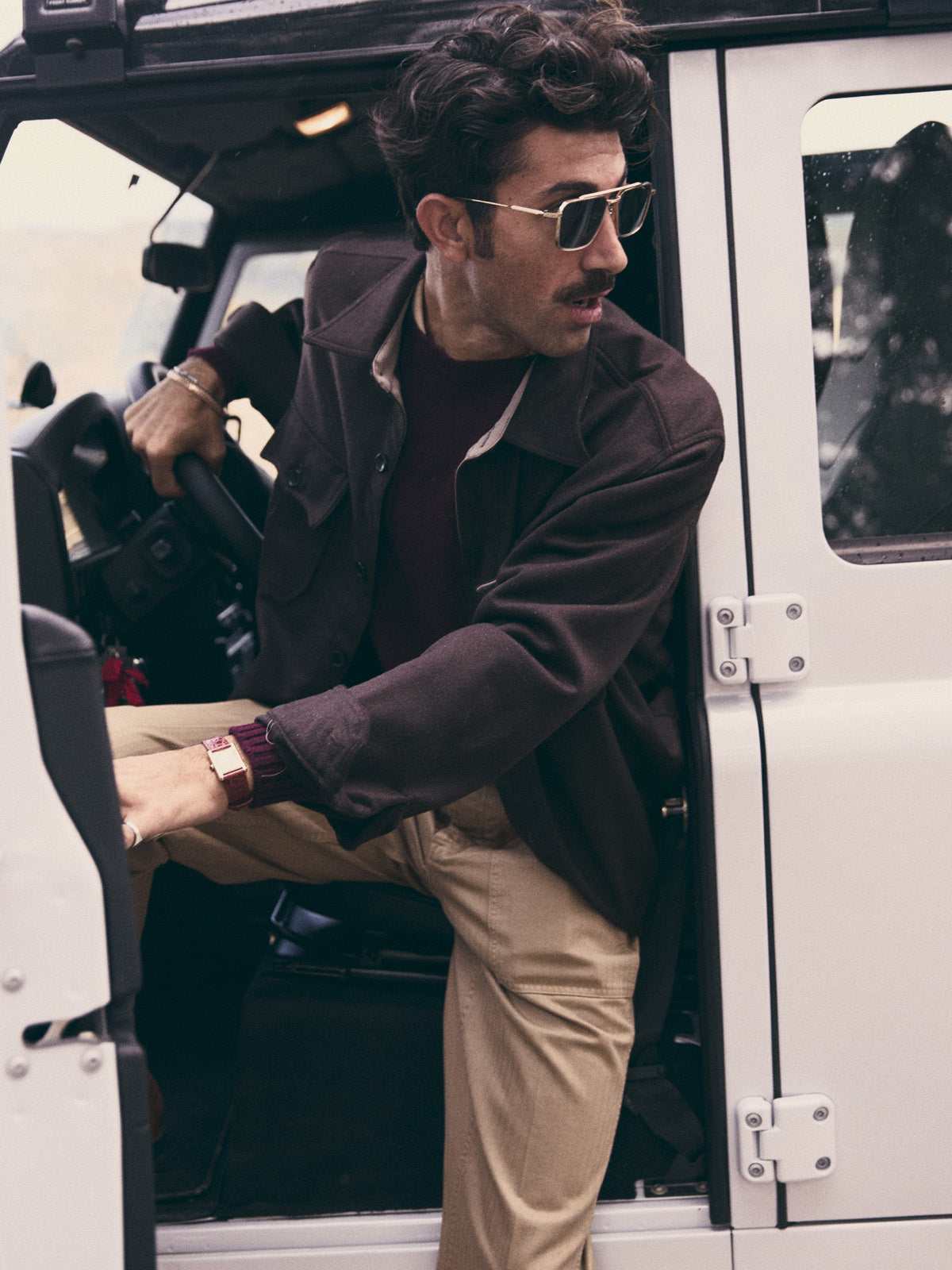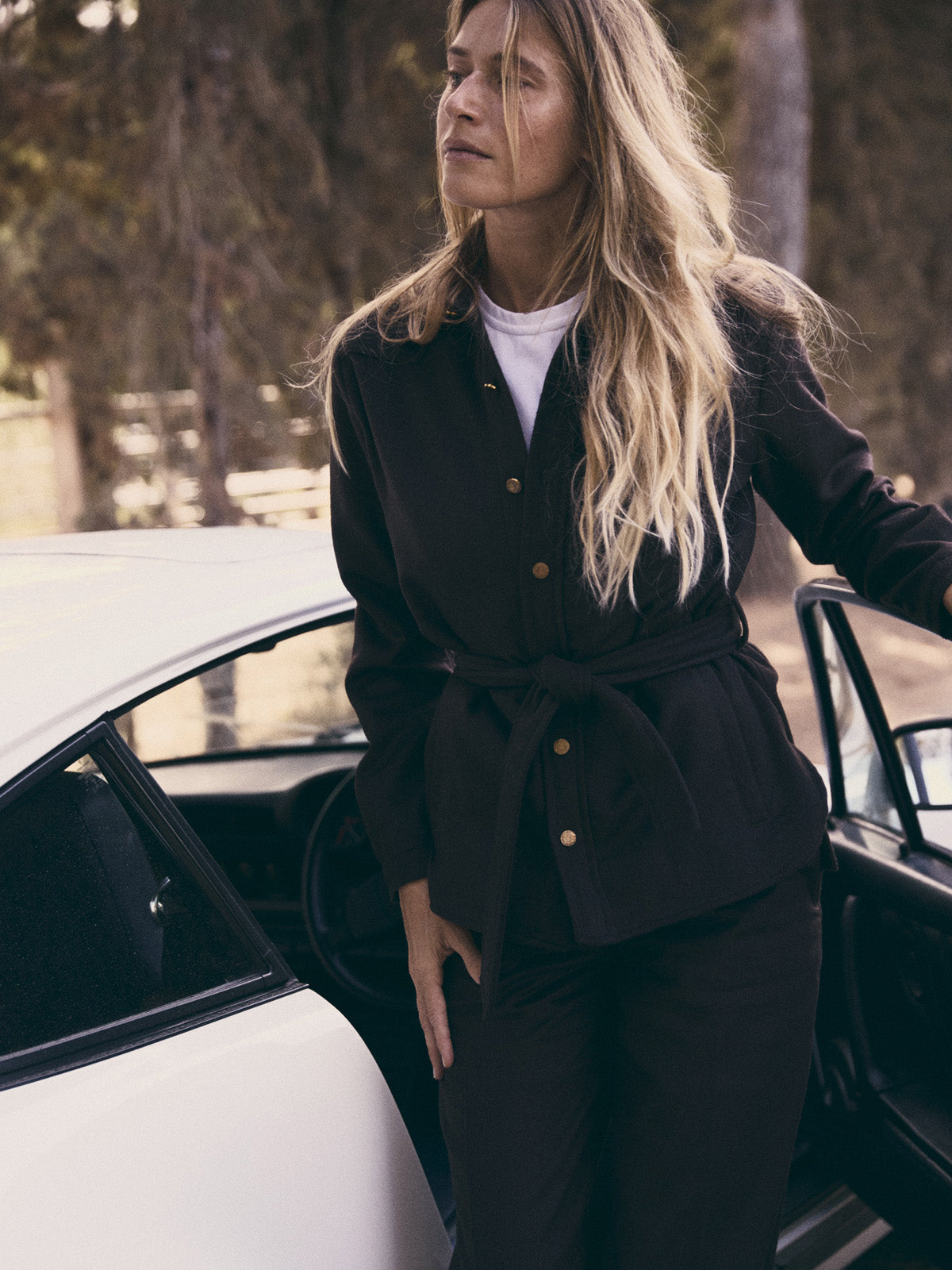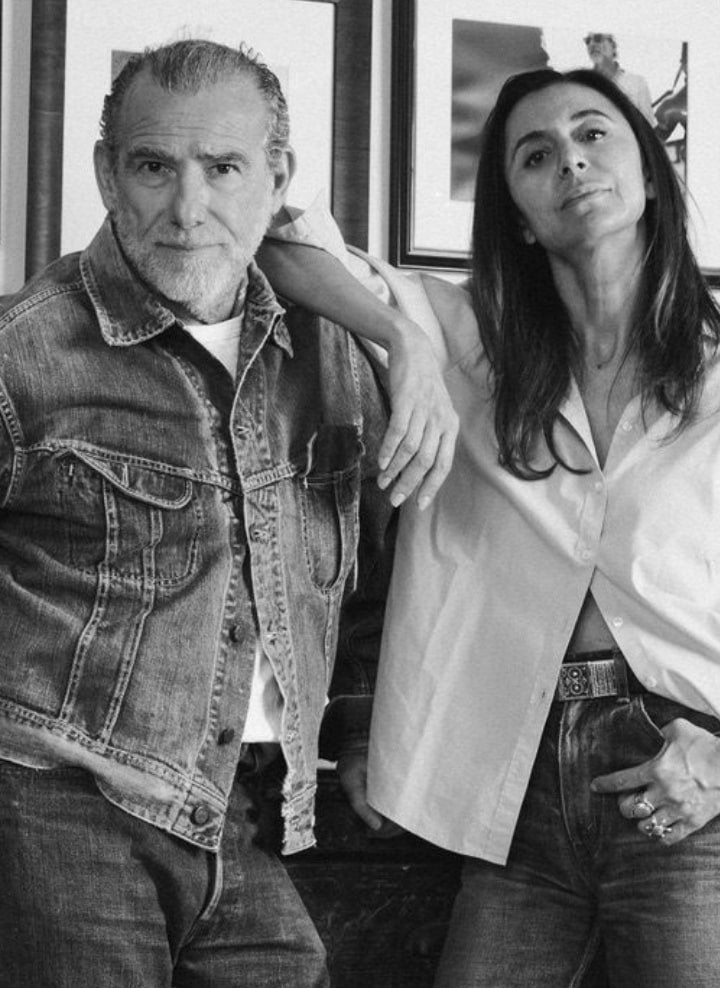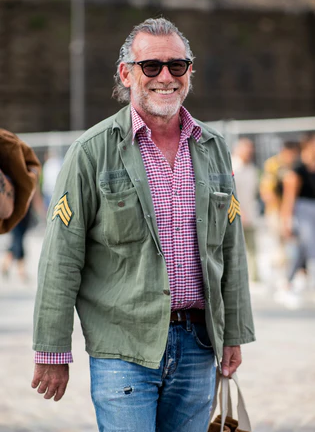THE WHISPERED ELEGANCE
There are destinies that seem to be written in light. Guido Taroni is one of those rare cases in which talent is not only an achievement, but also a luminous legacy. Great-grandson of Luchino Visconti, grandson of Giovanni Gastel, Taroni grows up immersed in a universe where art, image and beauty are familiar, everyday languages. His photography – suspended, refined, cultured – carries with it the breath of Visconti's cinema, the lyrical precision of the author's portrait, the naturalness of the light that caresses rather than strikes. His interior shots never seek effect: they are instead silent invitations to enter a world made of emotion and harmony, where every face, every detail, tells of an intimate and timeless aesthetic.

A lover of kindness and with a style of understated Italian elegance, Guido played a fundamental role in the birth and development of Cabana Magazine , the famous interior design magazine founded by Martina Mondadori in 2014. At the time, he was a young emerging photographer, but his aesthetic sensibility immediately struck Mondadori, who involved him in the creation of the first issue of the magazine. In an interview, Martina recalled: "I called him for lunch and he immediately understood what I meant. We spoke the same language. In just three weeks, he photographed all the places we had selected". Since then, Guido has remained a visual point of reference for Cabana magazine ( he is Interior Editor ), and has also published countless photography volumes with some of the most prestigious publishing houses including Rizzoli and Vendome Press. We interviewed him for this shooting with Fortela, set on the shores of Lake Como, a magical place where he grew up: his great-grandmother Carla Erba was “at home” in Cernobbio, in the renowned Villa Erba, the hub of a lively and cultured social life.

How did this passion for interior photography begin in you?
I think a little unconsciously. It was a natural return, perhaps, to the search for what I have always seen and the style that surrounded me, a style that permeated the places where I grew up: I am talking about the attention my parents have always had for the world of interiors. Or rather, the attention they had for beauty.
First of all, I would say that I inherited the vision of my mother and father, who were both lovers of interiors, in different ways. She (Anna Gastel, a woman who is a symbol of Milanese and Italian cultural life, ed.) was an “interior decorator by passion”, not by profession, she was an art historian, an expert in theater and music. She made “her” houses, and she made them with excellent taste. She knew how to find the right place for everything. And when she found the right place, the object acquired a new value, its own. It’s the same thing I have to do with photography: I have to feel that that is the right position, that that is the right light. A mix of instinct and visual education.
My mother was quite quick at decorating: she mixed family things with things found at markets, auctions, around... often furniture in terrible condition would pop up from the cellars, but then by enchanting her beloved craftsmen they would find their new life. Old fabrics or scarves that she no longer used became beautiful and sophisticated lampshades... she was very creative and she passed this taste on to me. She always told me: "When you decorate a house you have so much fun choosing and harmonizing colors, objects, fabrics and it seems like the creative process never ends... Then one day you look around, you arrange that last object and say "there, I'm done". And you enjoy that breath and that peace." I also feel that feeling of fullness when I know I have the right shot, when I have "finished" my work.
And your father instead?
Dad, compared to Mom, has a different style. I realize that I have a mix of the two in me, and this makes me tender, I like it a lot. My father Giorgio is an elegant and simple man, “understated” you might say, but he is also capable of being very scenographic. He is able, through the colors with which he grew up in close contact (because he comes from a family of painters), to create magical environments and unique gardens. He designed fabrics, and being close to him his color contaminated my work. He is also an art dealer and a great collector: of beetles, postcards, coins, paintings of the lake... he has so many interests and collections! They are all the fruit of this continuous search for inspiration and beauty. Because Dad, working on such creative projects in an era in which there were no computers yet, and his primary source of inspiration was books, illustrations, drawings, and nature. He has an immense archive of images. They are his resource.

Two natures, those of your parents, which converge in your work…
Yes. I must admit that I hadn't thought of becoming a photographer, not as a profession. When I started taking pictures, for pure pleasure, I was somewhat naturally pushed to frequent the studio of my uncle Giovanni Gastel (famous and appreciated Italian fashion and costume photographer, the photographer "of elegance", who passed away in 2021). I had the opportunity to work with him, a great honor for me. And so, after a photography internship at the Sancassani architecture and interior design studio, I landed at "uncle Gio", in his legendary studio in via Tortona. Famous models, actresses, haute couture clothes, make-up, jewelry passed through the studio... in short, it was a very stimulating world for a young man like me. I grew up with the idea of having, one day, a studio of my own. At the time, it was normal to be able to think about it. But those were the years in which fashion was "in fashion". And I thought, or rather hoped, to become a photographer, in 2020, with the same possibilities that a photographer had in the 80s. Big mistake: fashion has changed, or rather more, fashion in Italy has completely changed. Times have changed, completely. When I realized that things would not work out for me as I had dreamed, I admit that the emotion and the motivation died down a bit. I worked for many magazines at the time, but the flame was fading, more and more.
And then what happened?
Then I did my first exhibition, Sogni Sospesi, which was linked to art, family, color, my great-grandmother Carla Erba's clothes... and there I regained some self-esteem. I thought: maybe I can do something. And I moved towards interiors. It was my mother who pushed me. She would say to me: "Why don't you photograph interiors? You have a keen eye!" (We often discussed and commented on interiors, houses, we went together to choose fabrics...). She would repeat: "Why don't you take photos of houses? You'd be so good at it!" My answer was always a bit hesitant. It seemed like a world that didn't need interpretation. Then, instead, I understood that I could put something of myself into those interiors. That there was a way to interpret them. It was a discovery that made me fall in love with this sector of interior photography.
How would you describe your style?
I don't know if I have a style but in all this time I've been looking for my own way of seeing the world through the camera. My way probably goes a little out of the ordinary, out of the canonical patterns. I often asked myself: "will they like it"? Over the years I realized that my own emotion when I took pictures reached the user of my shot. Emotion often wins over the rule: I happen to shoot against the light, to deliberately blur or to shoot technically incorrectly, but if that mistake serves to sharpen the sensation then I capture it, like in a film. I capture the emotion. I feel happy, fulfilled. Because this sensation of the imperfect arrives, which is life. The truth of the world we live in. This is why I try to describe the places I photograph as they are, without altering them too much. Everyone, after all, arranges their objects in their own way. If I arrive and move them in my own way... there's too much of me. I'm fascinated by diversity. If I have to tell a story about a house, I like to tell it, as it is, truthfully. The adventure began with Cabana, when Martina Mondadori asked me to shoot for the first issue of the magazine, and continued with countless photo books, which took me around the world. I am lucky enough to see extraordinary places, and to learn about new cultures… it is the best job I could have wished for in my life!
![]()

What do you think of Fortela's idea of style?
I was struck by the elegance of its simplicity and, ultimately, its classicism. Because it is a whispered elegance. It is never loud, it has the right balance, which is what I like. When Alessia Giacobino asked me to take some photos of me, I found a beautiful selection of timeless pieces: the sage green dress, for example, looked like one of my dresses. I felt at ease right away. I have known Alessia for many years and we share the same passions: a love for interiors and decor, for certain slanted lights, antique furniture and fine art photography, and we both love a certain way of living and understanding style. As you can see in the beautiful store in Fortela, where you can breathe a particular, unique, very personal atmosphere, the result of research and an eye cultivated in beauty (Alessia was born as an architect and interior designer, ed.). There I found dresses in very elegant colors and semi-tailored pieces that will last a lifetime!
Future projects?
My next book is coming out, which is already in pre-order, with the publishing house Vendome Press , it will be called Inside Sicily , a project on Sicilian-inspired houses. There will not only be baroque palaces, but also homes scattered on small islands or in the hinterland... a book of houses lived around Sicily, touching many different territories. We will present it in September. I am also finishing what I have done on India, or rather on the most beautiful destinations of Rajhastan Rajasthan Style , old maharaja palaces in the city and in the countryside, with a focus also on wonderful tented camps.

A lover of kindness and with a style of understated Italian elegance, Guido played a fundamental role in the birth and development of Cabana Magazine , the famous interior design magazine founded by Martina Mondadori in 2014. At the time, he was a young emerging photographer, but his aesthetic sensibility immediately struck Mondadori, who involved him in the creation of the first issue of the magazine. In an interview, Martina recalled: "I called him for lunch and he immediately understood what I meant. We spoke the same language. In just three weeks, he photographed all the places we had selected". Since then, Guido has remained a visual point of reference for Cabana magazine ( he is Interior Editor ), and has also published countless photography volumes with some of the most prestigious publishing houses including Rizzoli and Vendome Press. We interviewed him for this shooting with Fortela, set on the shores of Lake Como, a magical place where he grew up: his great-grandmother Carla Erba was “at home” in Cernobbio, in the renowned Villa Erba, the hub of a lively and cultured social life.

How did this passion for interior photography begin in you?
I think a little unconsciously. It was a natural return, perhaps, to the search for what I have always seen and the style that surrounded me, a style that permeated the places where I grew up: I am talking about the attention my parents have always had for the world of interiors. Or rather, the attention they had for beauty.
First of all, I would say that I inherited the vision of my mother and father, who were both lovers of interiors, in different ways. She (Anna Gastel, a woman who is a symbol of Milanese and Italian cultural life, ed.) was an “interior decorator by passion”, not by profession, she was an art historian, an expert in theater and music. She made “her” houses, and she made them with excellent taste. She knew how to find the right place for everything. And when she found the right place, the object acquired a new value, its own. It’s the same thing I have to do with photography: I have to feel that that is the right position, that that is the right light. A mix of instinct and visual education.
My mother was quite quick at decorating: she mixed family things with things found at markets, auctions, around... often furniture in terrible condition would pop up from the cellars, but then by enchanting her beloved craftsmen they would find their new life. Old fabrics or scarves that she no longer used became beautiful and sophisticated lampshades... she was very creative and she passed this taste on to me. She always told me: "When you decorate a house you have so much fun choosing and harmonizing colors, objects, fabrics and it seems like the creative process never ends... Then one day you look around, you arrange that last object and say "there, I'm done". And you enjoy that breath and that peace." I also feel that feeling of fullness when I know I have the right shot, when I have "finished" my work.
And your father instead?
Dad, compared to Mom, has a different style. I realize that I have a mix of the two in me, and this makes me tender, I like it a lot. My father Giorgio is an elegant and simple man, “understated” you might say, but he is also capable of being very scenographic. He is able, through the colors with which he grew up in close contact (because he comes from a family of painters), to create magical environments and unique gardens. He designed fabrics, and being close to him his color contaminated my work. He is also an art dealer and a great collector: of beetles, postcards, coins, paintings of the lake... he has so many interests and collections! They are all the fruit of this continuous search for inspiration and beauty. Because Dad, working on such creative projects in an era in which there were no computers yet, and his primary source of inspiration was books, illustrations, drawings, and nature. He has an immense archive of images. They are his resource.

Two natures, those of your parents, which converge in your work…
Yes. I must admit that I hadn't thought of becoming a photographer, not as a profession. When I started taking pictures, for pure pleasure, I was somewhat naturally pushed to frequent the studio of my uncle Giovanni Gastel (famous and appreciated Italian fashion and costume photographer, the photographer "of elegance", who passed away in 2021). I had the opportunity to work with him, a great honor for me. And so, after a photography internship at the Sancassani architecture and interior design studio, I landed at "uncle Gio", in his legendary studio in via Tortona. Famous models, actresses, haute couture clothes, make-up, jewelry passed through the studio... in short, it was a very stimulating world for a young man like me. I grew up with the idea of having, one day, a studio of my own. At the time, it was normal to be able to think about it. But those were the years in which fashion was "in fashion". And I thought, or rather hoped, to become a photographer, in 2020, with the same possibilities that a photographer had in the 80s. Big mistake: fashion has changed, or rather more, fashion in Italy has completely changed. Times have changed, completely. When I realized that things would not work out for me as I had dreamed, I admit that the emotion and the motivation died down a bit. I worked for many magazines at the time, but the flame was fading, more and more.
And then what happened?
Then I did my first exhibition, Sogni Sospesi, which was linked to art, family, color, my great-grandmother Carla Erba's clothes... and there I regained some self-esteem. I thought: maybe I can do something. And I moved towards interiors. It was my mother who pushed me. She would say to me: "Why don't you photograph interiors? You have a keen eye!" (We often discussed and commented on interiors, houses, we went together to choose fabrics...). She would repeat: "Why don't you take photos of houses? You'd be so good at it!" My answer was always a bit hesitant. It seemed like a world that didn't need interpretation. Then, instead, I understood that I could put something of myself into those interiors. That there was a way to interpret them. It was a discovery that made me fall in love with this sector of interior photography.
How would you describe your style?
I don't know if I have a style but in all this time I've been looking for my own way of seeing the world through the camera. My way probably goes a little out of the ordinary, out of the canonical patterns. I often asked myself: "will they like it"? Over the years I realized that my own emotion when I took pictures reached the user of my shot. Emotion often wins over the rule: I happen to shoot against the light, to deliberately blur or to shoot technically incorrectly, but if that mistake serves to sharpen the sensation then I capture it, like in a film. I capture the emotion. I feel happy, fulfilled. Because this sensation of the imperfect arrives, which is life. The truth of the world we live in. This is why I try to describe the places I photograph as they are, without altering them too much. Everyone, after all, arranges their objects in their own way. If I arrive and move them in my own way... there's too much of me. I'm fascinated by diversity. If I have to tell a story about a house, I like to tell it, as it is, truthfully. The adventure began with Cabana, when Martina Mondadori asked me to shoot for the first issue of the magazine, and continued with countless photo books, which took me around the world. I am lucky enough to see extraordinary places, and to learn about new cultures… it is the best job I could have wished for in my life!

What do you think of Fortela's idea of style?
I was struck by the elegance of its simplicity and, ultimately, its classicism. Because it is a whispered elegance. It is never loud, it has the right balance, which is what I like. When Alessia Giacobino asked me to take some photos of me, I found a beautiful selection of timeless pieces: the sage green dress, for example, looked like one of my dresses. I felt at ease right away. I have known Alessia for many years and we share the same passions: a love for interiors and decor, for certain slanted lights, antique furniture and fine art photography, and we both love a certain way of living and understanding style. As you can see in the beautiful store in Fortela, where you can breathe a particular, unique, very personal atmosphere, the result of research and an eye cultivated in beauty (Alessia was born as an architect and interior designer, ed.). There I found dresses in very elegant colors and semi-tailored pieces that will last a lifetime!
Future projects?
My next book is coming out, which is already in pre-order, with the publishing house Vendome Press , it will be called Inside Sicily , a project on Sicilian-inspired houses. There will not only be baroque palaces, but also homes scattered on small islands or in the hinterland... a book of houses lived around Sicily, touching many different territories. We will present it in September. I am also finishing what I have done on India, or rather on the most beautiful destinations of Rajhastan Rajasthan Style , old maharaja palaces in the city and in the countryside, with a focus also on wonderful tented camps.

